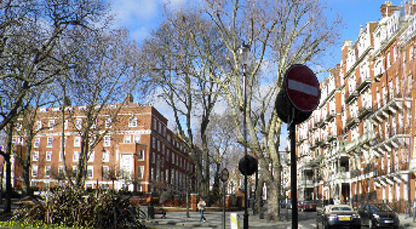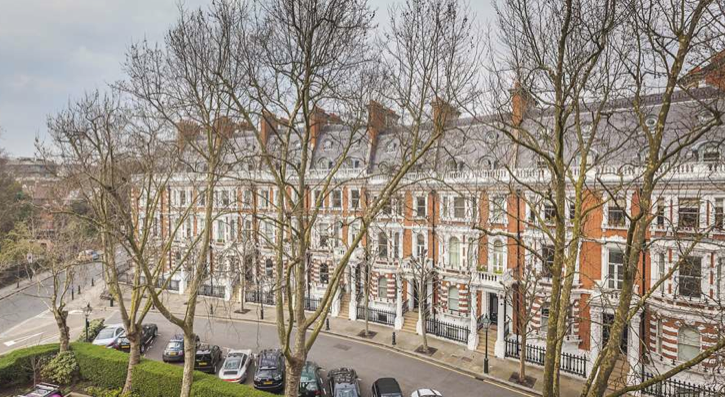The word ‘campden’ derives from the Roman campsite at Chipping Campden in Gloucestershire. The name was brought to Kensington by Sir Baptist Hicks, later Viscount Campden, whose family originated in Chipping Campden. In 1629, Sir Baptist constructed Campden House on Campden Hill; it was one of three important properties built in the area at around the same time, the others being Sir Walter Copes’ ‘castle’, later to become Holland House, and Nottingham House, which became Kensington Palace.
In the early eighteenth century, part of the extensive area of land attached to Campden House was acquired by the Phillimore family and became the Phillimore Estate (which is today located to the south and west of Campden Hill Court). The site of Campden Hill Court itself, and the area immediately to the north of it (which is now Observatory Gardens), was later purchased from the Estate by Sir James South, an astronomer. He added an observatory, with a dome built by the eminent engineer, Isambard Kingdom Brunel, and named his residence Observatory House. Sir James feared that traffic vibrations would disturb his astronomical observations and so it was only after his death that it became possible to open the southern section of Campden Hill Road and, in due course, to build Campden Hill Court along part of that road.
After Sir James died, his property was acquired in 1870 by a developer, Thomas Crawley of South Kensington. He drew up plans for what he called the Observatory Estate. These included two new roads. One, now Observatory Gardens, was to run from east to west and the other would go from north to south through the centre of the plot where Campden Hill Court now stands. The second road was never built.
Thomas Crawley first built the matching terraces of Observatory Gardens and the middle part of Hornton Street. Construction of Campden Hill Court began some twenty years later, in 1898.



